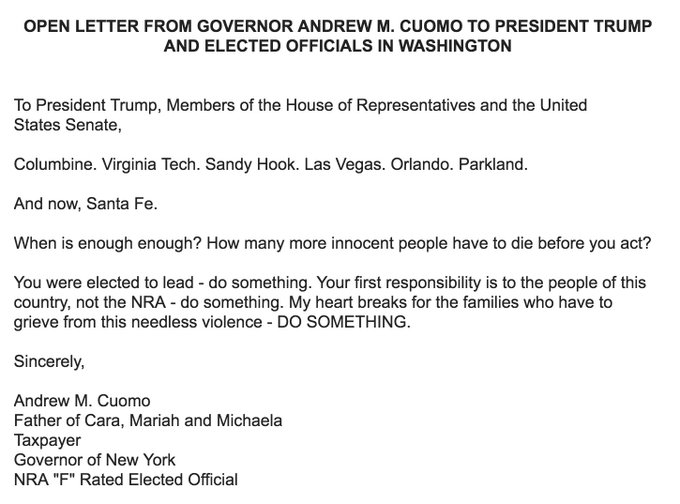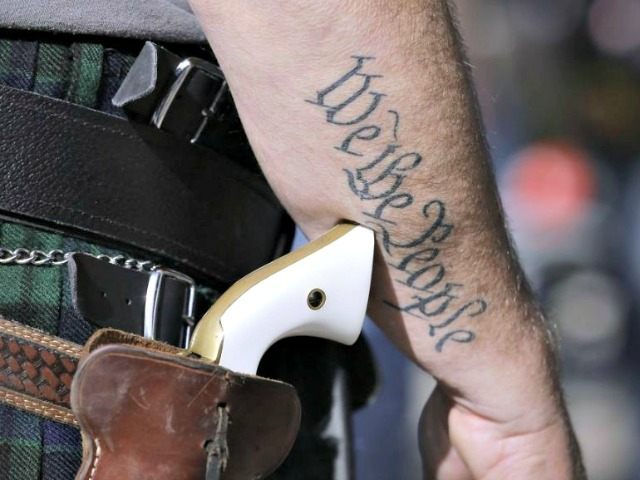Whether you call them visionaries or call them chuckleheads–or anything in between–you should tip your hat to the Texas legislature and Gov. Greg Abbott, who have now written fears of a fiscal Armageddon into state law.
Late last week, the Republican governor signed a bill establishing the first state-run gold depository in the nation. The Texas Gold Depository will position itself as an alternative to the U.S. government’s Fort Knox and the vault beneath the Federal Reserve Bank of New York.
When people in multiple states actually start using gold and silver… it would effectively nullify the Federal Reserve and end the federal government’s monopoly on money.
– Mises Institute
Its ostensible aim is to safeguard what its supporters say is $1 billion in state-owned gold bars once they’re retrieved from the Fed’s Manhattan vault, protecting them from seizure by outside forces, like the federal government. (More on that supposed $1 billion in a moment.) It will also hire itself out as a depository for private investors looking for a place to store their bullion, pending the collapse of civilization. in the meantime, they would be able to write checks on an account tied to their holdings.
The initiative, which was launched two years ago by a Dallas-area state legislator, has gold bugs everywhere vibrating with anticipation. These are people convinced that the Fed and other central banks are consistently “debasing” the value of money by running their printing presses; only a return to the intrinsic value of gold can preserve the economy.
“When people in multiple states actually start using gold and silver instead of Federal Reserve Notes, it would effectively nullify the Federal Reserve and end the federal government’s monopoly on money,” the right-wing, Alabama-based Mises Institute wrote on its website Monday, heralding the possible launch of “a system of gold and silver ‘certificates’ that could be traded as a type of money.”
Others “go further in blowing the secessionist dog whistle,” observes Brian Murphy of New York’s Baruch College, writing at Talking Points Memo. Among them is Geoffrey Pike of Wealth Daily, who writes that the Texas depository “is symbolic in retaining some liberty, similar to gun ownership in this country.” To be sure, Pike isn’t advising his followers to dump their gold into the Texas vault quite as yet–after all, he writes, Texas is a government too, not entirely to be trusted.
Gold
Not the best investment strategy? Since Texas officials invested in physical gold in mid-April 2011, stock market has soared and the gold price (represented here by the SPDR gold shares ETF), have slumped. (Yahoo Finance)
Radical conservatives long have cherished the idea of gold as a hedge against Armageddon. The ownership of physical gold is seen as a bulwark against such violations of individual liberty as Franklin Roosevelt’s 1933 order outlawing the hoarding of gold, part of his broader plan to take the country off the gold standard to give him more flexibility in crafting a recovery from the Great Depression.
The Texas measure reflects an outbreak of anti-Washington paranoia in the Lone Star State, which loves to picture itself as standing, well, alone. Gov. Abbott was among the politicians stoking conspiracy theories depicting the U.S. military’s Jade Helm training exercise, scheduled to start in Texas and other states this week, as a prelude to a federal takeover.
Former Gov. Rick Perry, who is again running for the GOP presidential nomination, has cited what he says is his state’s unique right to secede from the U.S., ostensibly granted as a condition of its joining the union in 1845. But historians say that right is mythical. In any case, Perry didn’t appear to have gone all the way toward advocating secession.
Texas also long has been a hive of hard-money fanatics. In 1979 and 1980 the Dallas-based brothers Nelson Bunker and William Herbert Hunt attempted to corner the silver market. Eventually they amassed one-third of all the privately held silver in the world, creating turmoil in the metals markets. But the price cracked, they wound up with a loss estimated at $1 billion, and eventually filed for bankruptcy.
It’s not unusual for financial advisors to counsel investors to keep some exposure to gold or other precious metals as a hedge against inflation, for their value tends to rise when inflation does, especially during sharp runups.
Owning physical gold, however, is another thing entirely: Bullion is expensive to store because it requires rock-solid security. It needs to be regularly assayed to establish its purity, especially if it’s moved, unless under painstaking chain-of-custody conditions.
How much gold does the state of Texas actually own, and where is it? Despite Abbott’s assertion that the depository law will “repatriate $1 billion of gold bullion from the Federal Reserve in New York to Texas,” the state doesn’t appear to own $1 billion in physical gold, and what it does own isn’t at the Federal Reserve.
The state’s holdings through the University of Texas Investment Management Co., or UTIMCO–UT’s $29-billion endowment fund–come to about $500 million or less. it’s held not at the New York Fed but a private bank vault in Manhattan. The holdings are the product of a policy created by a gold bug on the UTIMCO board, who persuaded his colleagues to convert UTIMCO’s investment in gold futures into nearly $1 billion in metal in April 2011.
Since then, the fund has cashed out of some of its gold bars; its current holdings, Murphy calculates, come to about 420,000 ounces worth about $500 million. As an investment, moreover, the gold bar ownership has been a bust since its inception; the price of gold has fallen from about $1,490 per ounce in mid-April 2011 to about $1,183 now. In the same period, the Standard & Poor’s 500 stock index has gained nearly 60%.
Keep up to date with the Economy Hub. Follow @hiltzikm on Twitter, see our Facebook page, or email michael.hiltzik@latimes.com.
Copyright © 2015, Los Angeles Times






